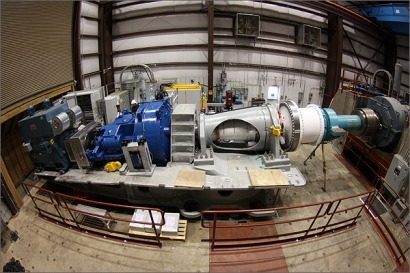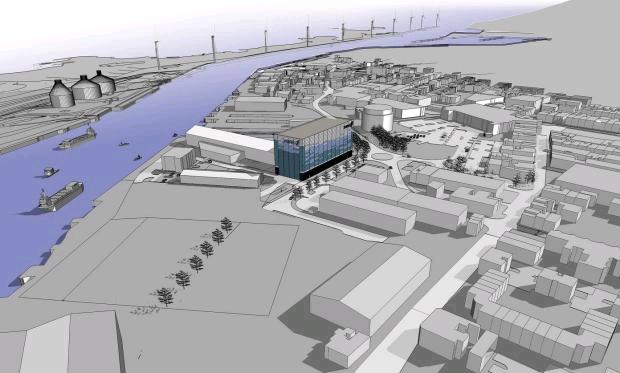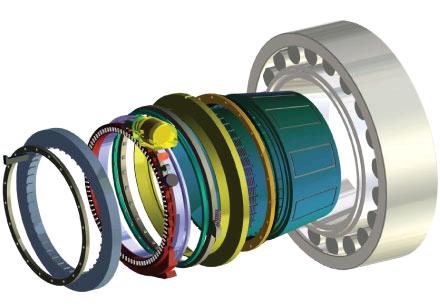
Offshore wind power is undergoing intense growth in order to meet the European energy targets laid out for 2020. Research and development is being carried out into all aspects of the industry as it attempts to emerge as the main source of renewable energy throughout Europe.
An integral component of a wind turbine, the drivetrain is continually evolving as new concepts and designs are explored. As larger turbines are developed, and more wind farms are installed in deeper water, the service and maintenance of each component must also be considered.
The design of drivetrains is moving towards direct drive technology, and new initiatives are also being developed in hydraulic and hydrodynamic technology. All of the new concepts and designs have reliability as a central aim in development, as drivetrain failure is a big contributor to the time a wind turbine spends out of commission.
Operation and development
Planned maintenance at sea is a much more complicated routine than on land, and unexpected service visits are highly unwelcome. A wind turbine drivetrain may have a yearly maintenance routine consisting of generator brush inspections, gearbox oil and filter changes, LSS bearing grease refill and container removal. The extra overheads of a boat, a crew, and sea trained technicians can easily amount to several thousand pounds; and the weather can delay schedule and increase the costs.
According to data gathered from existing offshore wind farms, drivetrain, generator, and gearbox failures account for around 14% of all down time for offshore turbines. Due to the complexity of repairs, however, they account for 39% of the time a turbine is out of commission per year. Typical failures include HSS generator and bearing damage, coupling degradation and internal gearbox component failures.
There are several causes associated with drivetrain failure, some specific to the offshore environment. Wind speed can increase considerably even when only a short distance from the shore; while this improves the potential for energy production, it significantly increases the stress and pressure placed on components and can cause fatigue damage far quicker than in onshore applications. Turbulence is also greatly increased at sea, and although designers plan the layout of wind farms to avoid it, turbines can still be subject to downstream turbulence from other turbines in the grid.
Direct drive technology is being developed to eliminate the gearbox from the drivetrain assembly altogether. While Hybrid technology is being developed to combine very simple and reliable gearboxes with direct drive systems. These are being designed with maintenance fully in mind, and monitoring systems are being developed which can highlight weaknesses before they become failures to proactively prevent down time.
ETI drivetrain test rig
To support the Crown Estates’ round three offshore programs in the UK, the Energy Technologies Institute is building a wind turbine drivetrain test rig in Blyth, Northumberland. The rig will be open access and will be the world’s largest test centre, able to test turbines up to 15MW. The indoor test rig is being designed so that the whole nacelle can be tested prior to installation, giving much more commercial security to large scale deployment.
Built on the Narec (New and Renewable Energy Centre) site in Blyth, and known as Project Fujin, the test rig will enable drivetrain testing in different dynamic scenarios, and will test the whole drivetrain system. New technologies and prototypes can be rigorously tested before trial installation, helping to speed up the design process.
Opening in late 2011, the centre will test gearbox design, validation and development, converter and control validation, grid disconnection simulation, component testing and research, environmental impact simulation, and lightening strike protection systems.

Artist’s impression of the drivetrain test centre, Source: Narec
ETI’s Chief Executive, David Clarke, said of the test centre, “This world leading facility will allow turbine manufacturers and engineering teams to test the reliability of their equipment under realistic load conditions without the expense and risk of deploying them offshore.”
Ricardo MultiLife Bearing
Ricardo was selected in collaboration with HORIBA to design plans for the construction of the ETI drivetrain test rig, and the company was also given a grant of three million pounds by the Northern Wind Innovation Program (NWIP) to develop durable gearbox bearings for wind turbine gearboxes.
A global company, Ricardo is a key developer within the wind turbine drivetrain sector, and is involved in the design of modular solutions for drivetrains. The MultiLife bearing project was initiated to increase the durability and reliability of gearbox bearings for use offshore. Bearings are prone to several different types of failure and in-service maintenance is very difficult due to conditions.

Source: Ricardo
Research by Ricardo found that wind turbine bearings with fixed inner races can wear in a 40 degree arc, resulting in premature failure. Ricardo has been tasked with developing a prototype bearing which will have a five times increase in lifespan. The final design of the MultiLife bearing provides several benefits; it can be retro-fitted to existing turbines with very little change needed to the gearbox. Ricardo is confident that this year it will complete the project and reveal a bearing with a five times increased life expectancy.
Want to learn more about current technologies and developments in the drivetrain concepts for wind turbines? Visit the download centre on the website of the 2nd Drivetrain Concepts for Wind Turbines Conference being held in October for more articles, white papers and interviews.
Editor's note: This article was kindly provided by conference organisers, IQPC, who are responsible for the conference in October and have just finished the Offshore Foundations for Wind Turbines Conference in Bremen (Germany).
For additional information:

